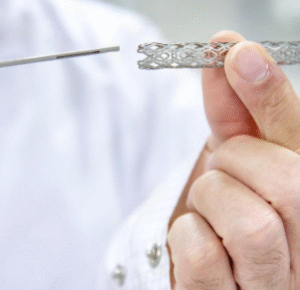1. Introduction to Aesthetic Medicine
Aesthetic medicine focuses on enhancing physical appearance and boosting self-confidence through non-surgical and minimally invasive procedures. It is a rapidly growing field, attracting professionals eager to blend art with science to improve patients’ lives.
2. What is a Fellowship in Aesthetic Medicine
A fellowship in aesthetic medicine provides advanced, specialized training beyond basic medical education. It equips practitioners with skills and knowledge to perform a variety of aesthetic procedures safely and effectively.
3. Importance of Specialization
Specialization through a fellowship is crucial in aesthetic medicine due to the complexity and precision required in treatments. It ensures practitioners are well-versed in the latest techniques and technologies.
4. Benefits of a Fellowship Program
Fellowship programs offer extensive hands-on training, mentorship from experienced professionals, and exposure to the latest advancements in aesthetic medicine, which can significantly enhance a practitioner’s expertise and career prospects.
5. Curriculum Overview
The curriculum of a fellowship in aesthetic medicine typically includes comprehensive modules on injectables, laser treatments, skin rejuvenation techniques, and patient consultation skills. It balances theoretical knowledge with practical application.
6. Eligibility Criteria
Eligibility for a fellowship in aesthetic medicine usually requires a medical degree and a valid medical license. Some programs may also require prior experience in dermatology, plastic surgery, or a related field.
7. Leading Institutions Offering Fellowships
Several prestigious institutions worldwide offer fellowships in aesthetic medicine, known for their robust training programs and state-of-the-art facilities. Researching these institutions can help in choosing the best program.
8. Application Process
The application process for a fellowship typically involves submitting academic transcripts, a statement of purpose, letters of recommendation, and sometimes, an interview. It’s essential to prepare thoroughly to stand out among applicants.
9. Duration of the Fellowship
Fellowships in aesthetic medicine can vary in duration, typically ranging from six months to two years, depending on the program and the depth of training provided.
10. Hands-on Training Opportunities
One of the key components of a fellowship is the extensive hands-on training. Fellows work directly with patients under the supervision of experienced mentors, gaining practical skills in various aesthetic procedures.
11. Learning Advanced Techniques
Fellows learn advanced techniques in aesthetic medicine, including the use of cutting-edge technologies like laser therapy, advanced injectables, and innovative skin rejuvenation methods.
12. Role of Mentorship
Mentorship plays a critical role in fellowship programs. Experienced mentors guide fellows through complex cases, providing insights and feedback that are invaluable for professional growth.
13. Research and Innovation
Fellowship programs often encourage research and innovation. Fellows may have the opportunity to participate in clinical trials, contribute to academic publications, and present findings at conferences.
14. Ethical Considerations
Ethics in aesthetic medicine is paramount. Fellowship programs emphasize the importance of informed consent, patient safety, and maintaining high ethical standards in all procedures.
15. Career Opportunities Post-Fellowship
Completing a fellowship opens up numerous career opportunities. Graduates can work in specialized aesthetic clinics, start their own practice, or join academic institutions as educators and researchers.
16. Networking and Professional Growth
Fellowship programs provide excellent networking opportunities. Fellows connect with leading professionals, peers, and industry experts, fostering relationships that can benefit their careers long-term.
17. Continuing Education
The field of aesthetic medicine is continuously evolving. Fellowships instill the importance of continuing education, encouraging graduates to stay updated with the latest advancements and maintain their skills.
18. Global Recognition
Fellowships from reputable institutions are globally recognized, enhancing the professional credibility and marketability of practitioners in the international arena.
19. Patient Consultation Skills
Effective patient consultation is crucial in aesthetic medicine. Fellowship programs train practitioners to communicate effectively, understand patient needs, and manage expectations.
20. Impact on Patient Satisfaction
Specialized training through a fellowship can significantly impact patient satisfaction. Skilled practitioners are better equipped to deliver safe, effective, and aesthetically pleasing results.
21. Integration of Aesthetic Medicine into Practice
Fellows learn how to integrate aesthetic medicine into their existing practice or set up a new practice focused on aesthetics, including business and marketing strategies.
22. Technological Proficiency
Proficiency in the latest aesthetic technologies is a key component of fellowship training. Fellows gain hands-on experience with advanced devices and equipment.
23. Customized Treatment Plans
Fellows are trained to create customized treatment plans tailored to individual patient needs, ensuring personalized care and optimal outcomes.
24. Alumni Success Stories
Hearing from alumni who have completed the fellowship can provide insights and inspiration. Many alumni have gone on to achieve significant success in the field of aesthetic medicine.
25. Conclusion: Choosing the Right Fellowship
Selecting the right fellowship in aesthetic medicine requires careful consideration of the program’s curriculum, faculty, hands-on training opportunities, and alignment with career goals. A well-chosen fellowship can be a transformative step in a medical professional’s career, paving the way for excellence in aesthetic medicine.




